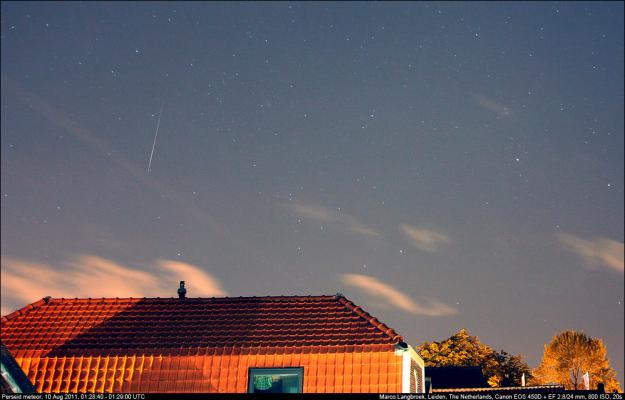Earth is entering a stream of debris from Comet Swift-Tuttle, source of the annual
Perseid meteor shower. International observers are
now reporting nearly 20 Perseids per hour, a number that will increase as the shower reaches its peak on August 12-13.
After midnight on August 10th, Marco Langbroek caught this early Perseid flying over his moonlit roof in Leiden, the Netherlands:

© Marco LangbroekConditions were very dynamic, with fast moving cloud fields. During a clearing, I captured this Perseid (10 Aug 2011 between 01:28:40 - 01:29:00 UTC) low in the west. Canon EOS 450D + EF 2.8/24mm lens, 800 ISO, 20s exposure, Leiden town center.
On the same night in Dayton, Ohio, photographer John Chumak recorded a
flurry of Perseids. "More than 3 dozen bright meteors rained down over my observatory last night!" he says. "Many were brighter than I expected, so there is still a chance for folks to see some Perseids despite the glare of the bright Moon."
The best time to look is Saturday morning, Aug. 13, just before dawn when the Moon is low and meteor rates are peaking. Some observers will also see the International Space Station, which coincidentally flies over many US towns and cities during the shower's peak:
ISS tracker. Also, be sure to tune into
Space Weather Radio to hear the ghostly pings of Perseids disintegrating over the US Air Force's Space Surveillance Radar. It makes a great soundtrack for any meteor watch.




Reader Comments
to our Newsletter